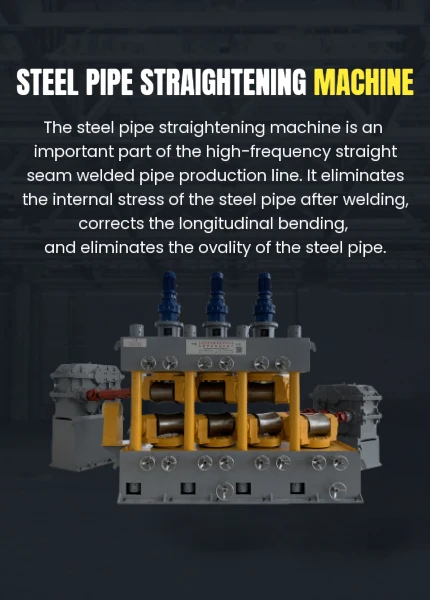uncoiler machine price
Understanding the Price of Uncoiler Machines
In the world of manufacturing and metalworking, efficiency and precision are paramount. Uncoiler machines play a crucial role in this process, as they are designed to handle and feed metal coils into various fabrication equipment. With the increasing demand for such machinery, understanding the factors that influence the price of uncoiler machines is essential for businesses in the industry.
What is an Uncoiler Machine?
An uncoiler machine, also known as a decoiler, is used to unwind coils of metal, which are otherwise cumbersome and challenging to manage. These machines facilitate a smooth, automated process, reducing manual labor and minimizing the risk of damage to materials. Uncoiler machines can handle different types of metal, including steel, aluminum, and copper, making them versatile tools in various sectors such as automotive, construction, and electronics.
Factors Influencing the Price
1. Type and Capacity The price of uncoiler machines can vary significantly based on their type and capacity. Simple manual uncoilers are typically less expensive, starting at a few thousand dollars, while fully automated models with advanced features can cost tens of thousands or more. The capacity of the machine, which refers to the maximum coil weight it can handle, also plays a crucial role in pricing. Machines designed for heavy-duty applications will naturally command a higher price.
2. Features and Technology The level of technology integrated into uncoiler machines greatly influences their cost. Basic models may have fewer features, while advanced machines may include automatic coil feeding, tension control, and integrated controls for better precision. The more sophisticated the technology, the higher the potential price. Companies are often willing to invest more in machines that enhance productivity and reduce setup time.
3. Material and Build Quality The materials used in constructing the uncoiler machine can affect the price. Machines built with high-quality, durable materials may be more expensive initially but tend to offer better longevity and performance. Additionally, the reputation of the manufacturer contributes to the price. Well-known brands that guarantee quality and reliability may charge a premium for their products.
uncoiler machine price

4. Customization Some manufacturers offer customization options to tailor the uncoiler machine to specific operational needs. Customizing features such as size, capacity, and additional functionalities can add to the overall cost. Businesses should evaluate their requirements carefully to determine whether the added expense will yield a worthwhile return on investment.
5. Market Trends and Demand Like many industrial tools, the pricing of uncoiler machines can fluctuate based on market trends and demand. Increased demand in industries such as construction and automotive can drive prices up, while a surplus of supply may lead to lower prices. Monitoring market trends is crucial for businesses looking to make a purchase decision.
Making the Right Investment
When considering the purchase of an uncoiler machine, it is essential to keep in mind that the highest price does not always guarantee the best value. Businesses should assess their operational needs, budget constraints, and the total cost of ownership, which includes maintenance and potential operational savings.
Furthermore, sourcing quotes from multiple manufacturers and comparing their features can lead to informed decisions. Companies can often negotiate better prices or find favorable financing options, making the investment more manageable.
Conclusion
In conclusion, the price of uncoiler machines is influenced by various factors including type, capacity, features, build quality, customization, and market dynamics. For businesses in manufacturing, understanding these dynamics is crucial when investing in machinery that enhances productivity and efficiency. By taking the time to analyze options and consider long-term benefits, companies can make wise purchasing decisions that contribute to their growth and competitiveness in the industry.
-
High Frequency Straight Seam Welded Pipe Production Line-BzZhou Xinghua Machinery Equipment Manufacturing Co., LTD.|Precision Welding, High EfficiencyNewsJul.30,2025
-
High Frequency Straight Seam Welded Pipe Production Line|BzZhou Xinghua|Precision Welding&EfficiencyNewsJul.30,2025
-
High Frequency Straight Seam Welded Pipe Production Line - BzZhou Xinghua|Precision Engineering&EfficiencyNewsJul.30,2025
-
High-Frequency Straight Seam Welded Pipe Production Line-BzZhou Xinghua Machinery Equipment Manufacturing Co., LTD.NewsJul.30,2025
-
High-Frequency Straight Seam Welded Pipe Production Line-BzZhou Xinghua Machinery Equipment Manufacturing Co., LTD.|Precision Manufacturing, High EfficiencyNewsJul.30,2025
-
High Frequency Straight Seam Welded Pipe Production Line-BzZhou Xinghua Machinery Equipment Manufacturing Co., LTD.|Precision Steel Pipe Manufacturing&Industrial EfficiencyNewsJul.29,2025


